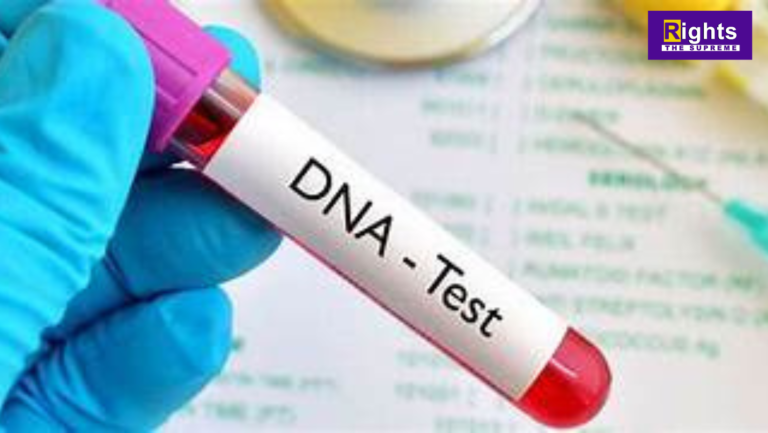FACTUAL MATRIX-
SITUATION 1:
X and Y got married in 2005 according to Hindu Rites and Customs. Thereafter, during the subsistence of valid marriage a child named 'Z' was born in the year 2009. By that time the relationship between husband and wife became sour and the husband filed for divorce on the grounds of adultery and infidelity of wife. He also filed an application seeking a direction that children born to the wife be subjected to deoxyribonucleic acid test (for brevity "DNA"), with a view to ascertain his paternity. This application was filed in the divorce proceeding.
SITUATION 2:
`A', an adult, claims to be his biological father and files a suit for declaration. Additionally, an application was filed seeking a direction that his father be subjected to DNA test. Moreover, the mother and the legal father of 'A' both admitted the fact that there was no access at the relevant point of time between the parties.
ANSWER TO SITUATION 1:
Under situation number I, it is to be noted that the child was begotten during the subsistence of valid marriage. Thus, conclusive presumption provided under section 112 r/w section 4 of Indian Evidence Act, 1860 (for short IEA’) and section 116 r/w section 2(1)(b) of Bharatiya Sakshya Adhiniyam, 2023 as to legitimacy of child comes into existence.
BARE PROVISION:
Section 112 of Indian Evidence Act– The fact that any person was born during the continuance of a valid marriage between his mother and any man, or within two hundred and eighty days after its dissolution, the mother remaining unmarried shall be conclusive proof that he is the legitimate son of that man, unless it can be shown that the parties to the marriage had no access to each other at any time: when he could have been begotten."
This section is based on the well-known maxim "pater est quem nuptioe demonstrant” (he is the father whom the marriage indicates). The idea behind establish a conclusive presumption in favour of the legitimacy of him or her to the stigma of being a bastard.
From a plain reading of the aforesaid, it is evident that a child born during continuance of a valid marriage shall be a conclusive proof that the child is a legitimate child of the man to whom the lady giving birth is married. The provision makes the legitimacy of the child to be a conclusive proof, if the conditions aforesaid are satisfied.
It can be rebutted only if it is shown that the parties to the marriage have no access to each other at any time when the child could have been begotten. This presumption can only be displaced by a strong preponderance of evidence, and not by a mere balance of probabilities.
It is to be noted that mere proving access of mother with any other person is net sufficient. Non-access between married couples must be proved.
It is pertinent to answer here whether non-access can be proved through DNA tests. No doubt, DNA testing is the most legitimate and scientifically perfect means, which the husband could use to establish his assertion of infidelity.
However, as per Aparna Ajinkya Firodia Versus Ajinkya Arun Firodia (20 February, 2023) the question as to whether a DNA test should be permitted on the child, is to be analysed through the prism of the child and not through the prism of the parents. The child cannot be used as a pawn to show that the mother of the child was living in adultery. It is always open to the respondent- husband to prove by other evidence, the adulterous conduct of the wife, but the child's right to identity should not be allowed to be sacrificed.
Also, in the above mentioned case the following principles as to DNA test were summarised which are as follows:-
I. That a DNA test of a minor child is not to be ordered routinely, in matrimonial disputes. Proof by way of DNA profiling is to be directed in matrimonial disputes involving allegations of infidelity, only in matters where there is no other mode of proving such assertions.
ii. DNA tests of children born during the subsistence of a valid marriage the directed, only when there is sufficient prima-facie material to dislodge the presumption under Section 112 of the Evidence Act. Further, if no plea has been raised as to non-access, in order to rebut the presumption under Section 11 of Evidence Act, a DNA test may not be directed.
iii. A court would not be justified in mechanically directing a DNA test of a child, in case where the paternity of a child is not directly in issue, but is merely collateral to the proceeding.
iv. Merely because either of the parties has disputed a factum of paternity. It does not mean that the Court should direct a DNA test or such other test to resolve the controversy. The parties should be directed to lead evidence to prove or disprove the factum of paternity and only if the Court finds it impossible to draw an inference based on such evidence, or the controversy in issue cannot be resolved without DNA controversy the Court can direct such test.
v. While directing DNA tests as a means to prove adultery, the Court is to be mindful of the consequences thereof on the children born out of adultery, including inheritance-related consequences, social stigma, etc.
Therefore, by applying above law on the situation I, it is concluded that an application seeking DNA test of child be rejected as child is presumed to be begotten during the subsistence of valid marriage as welfare of child is of paramount consideration.
However, there may be cases under which DNA tests are allowed in order to avoid vagrancy and bastardization.
On this note, let us discuss situation number 2.
ANSWER TO SITUATION 2:
Under situation number 2, demand for a DNA test is made by an alleged son. Thus, upon considering this fact and after analysing the purpose of section 112 of IEA and Section 116 of BSA, which is to protect the legitimacy of child, the paternity action by `A', claiming to be his biological father is maintainable in law. The same was held in the case of Narayan Dutt Tiwari vs. Rohit Shekhar (2012) SCC 5.
Moreover, to determine whether DNA test be allowed or not, the test of “eminent need” was laid down in the case of Gautam Kundu vs. State of West Bengal (1993) 3 SCC 418 wherein it was observed that the Indian law leans towards direction for DNA test should be passed only after balancing the including the rights of the child, and if such a test is eminently needed.
EDITOR’S NOTE:
With the advancement of technology, the results of DNA tests are considered as more reliable and authentic. Nevertheless, courts in India do not order DNA tests as a matter of course. However, owing to vulnerability of child and in order to protect the interest of children, DNA test can be ordered by the courts.

